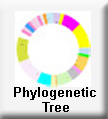


|
|
|
Syn.
|
Criconema seymouri Wu, 1965
Crossonema (Seriespinula) seymouri (Wu) Mehta & Raski, 1971 Seriespinula seymouri (Wu) Mehta & Raski, 1971 Seriespinula seymouri (Wu) Khan, Chawla & Saha, 1976 |
This Species included in the Criconematid Project
DNA Sequences Obtained:
| N308 | Pachaug State Forest, CT |
 |
 |
 |